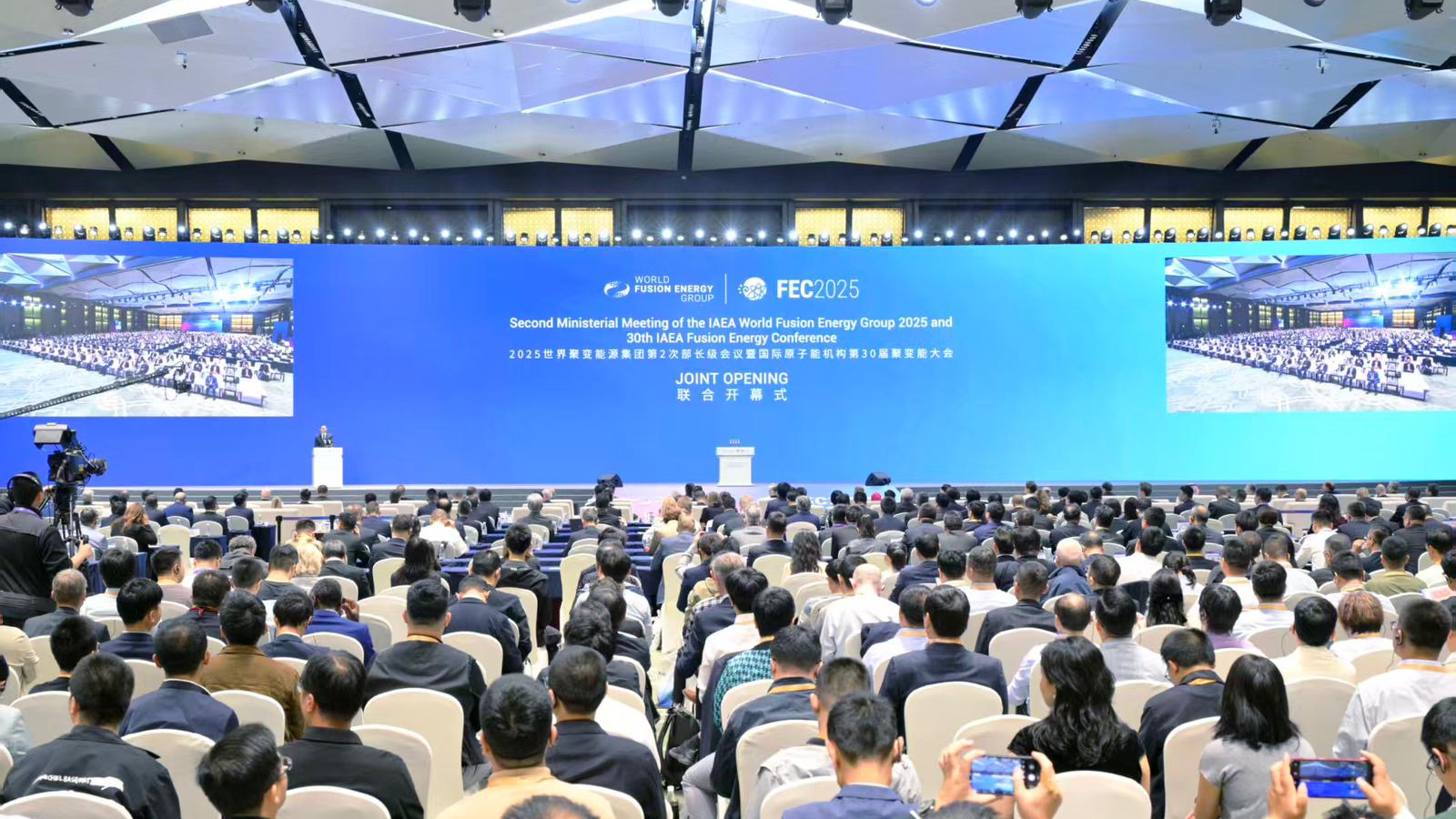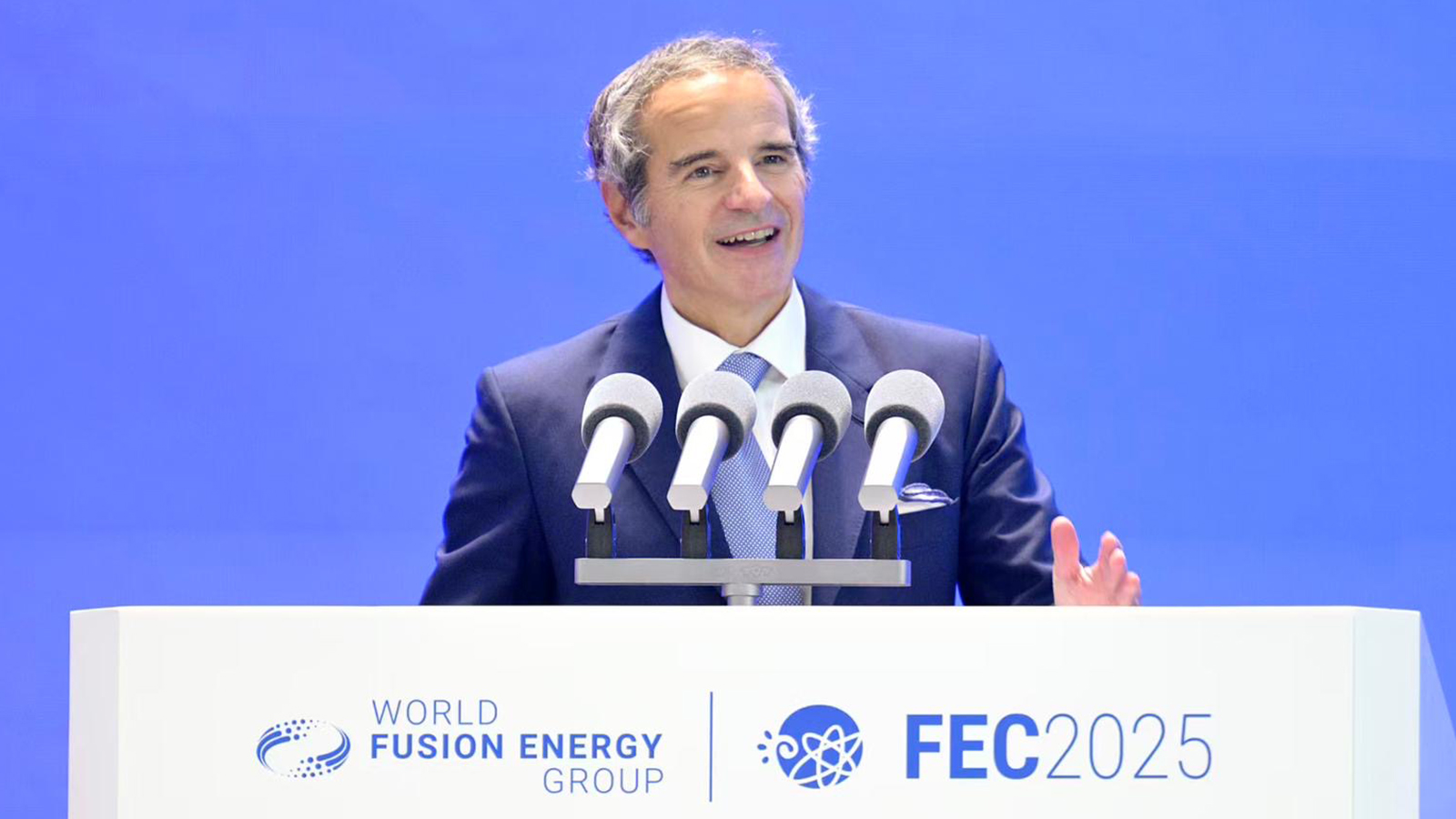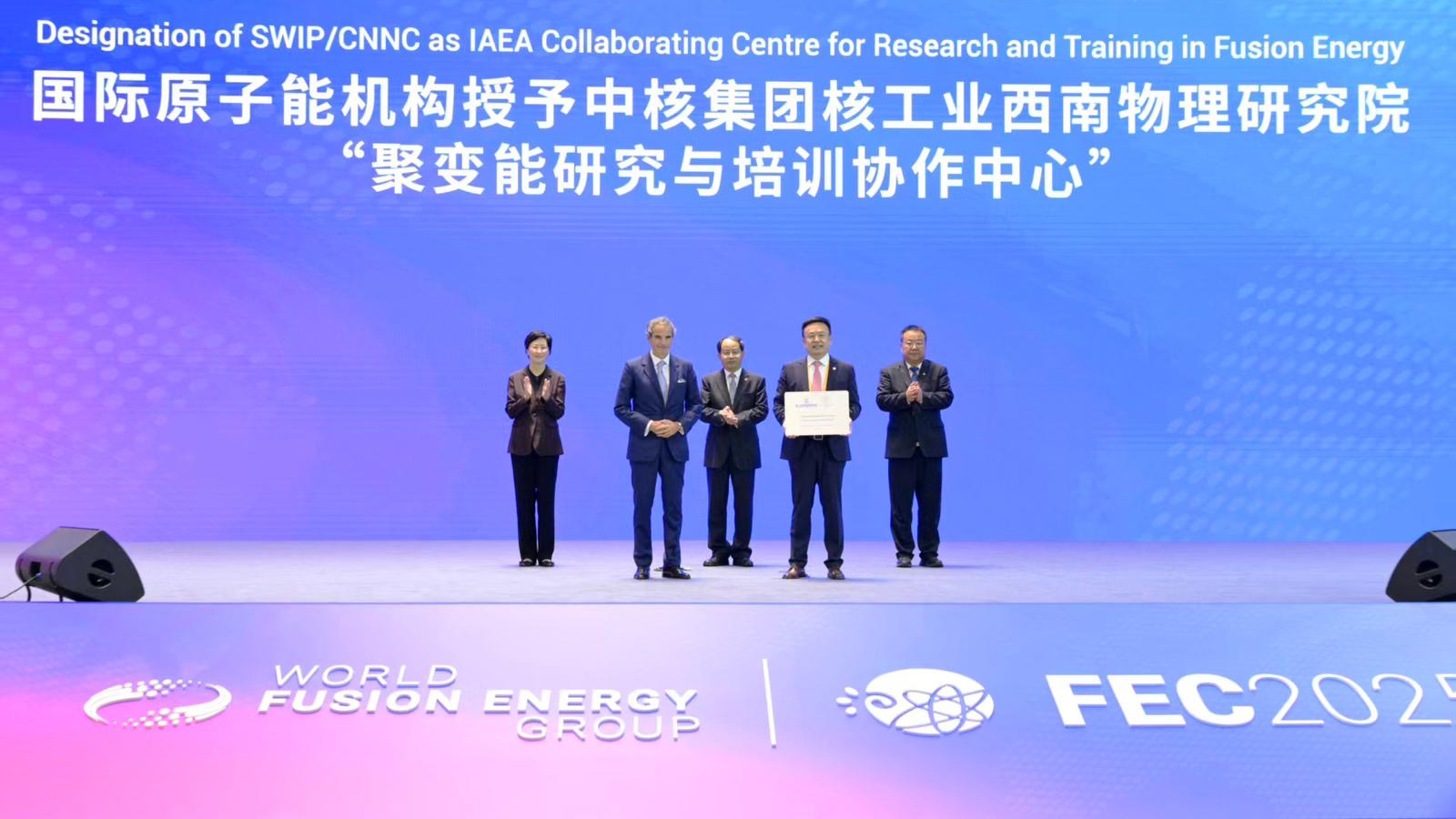The second Ministerial Meeting of the IAEA World Fusion Energy Group was held on Tuesday 14 October in Chengdu, China, co-chaired by the China Atomic Energy Authority and the IAEA. The meeting brought together high-level and senior officials from dozens of countries, international organizations, and private industry to exchange information on national policies, programmes and initiatives relating to fusion energy, a potentially abundant source of clean energy capable of meeting growing development needs.
Launched in 2024, the World Fusion Energy Group (WFEG) serves as a global platform to unite public and private sector stakeholders, as well as representatives from academia and regulatory bodies, to accelerate the research, development, demonstration and deployment of fusion energy. This year’s meeting built on the momentum of the first meeting in Rome, deepening dialogue on research and development towards demonstration and deployment, fusion regulation and global supply chains.
The WFEG opened jointly with the 30th IAEA Fusion Energy Conference, which runs until Saturday 18 October, providing a global platform for sharing the latest research and advances in fusion energy. It brings together public institutions and private companies from around the world, featuring cutting edge progress in experiments, theory, engineering, materials, and commercialization pathways.



